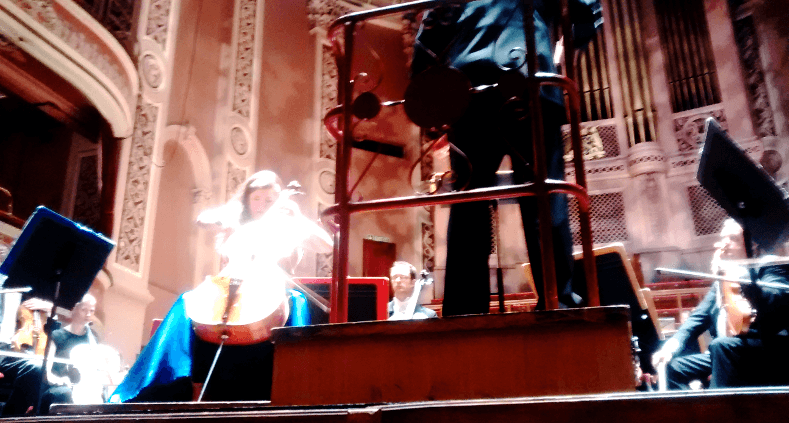2015-03-30 15:46:39
Lesson 99
The majority of the lesson was dissecting the Popper piece to tackle the severe intonation issues I had playing it. The theory being that familiarising myself with the arpeggios should prepare me to hear what each phrase per bar should sound like.
I'm only tackling the piece up to bar 11 since the phrases repeat throughout the music and we're not going any further to the challenging thumb positions before this bit is stable.
Arpeggios to aid Popper piece up to bar 11
Bars 1 - 2 : C Major, A Minor
Bars 3 - 4 : D Minor, Bflat Major
Bars 5 : Diminished 7th starting on F / starting on Eflat
Bars 6 : G Major, E Major
Bars 7 : A Major, Esharp Augmented (Feuillard pg 33 - 2nd augmented arpeggio)
Bars 8 : D Major, Diminished 7th starting on Fsharp (see above - Eflat)
Bars 9 - 10 : Practise as double stops
Bars 11 : Fsharp Major, Dsharp Minor
Lesson 100
I've yet to visit the luthier. Taking public transport with the cello is not a desirable task and I implore no one to do it. More so if the destination of your choice isn't readily available to the nearest bus stop or train station. Trekking around with a cello on your back isn't necessarily a wise thing to do, especially in a busy city of aimless people and especially so if the cello seems bigger than you!
Anyways, it has been noticed that the bridge is a tad higher for the upper strings and it has made stopping two strings for Popper's piece a little tricky. Producing a clean sound at the angle is much harder, no matter how efficient so depending on what Jan (luthier) says, we might even have to replace the bridge. There are no markings on the current one but the strings are digging in rather deep into it.
Some notes for the Popper piece
Practice shifts to positions. This will improve intonation!
Position revisions.
Know which position to shift to.
Meticulous analysis of each phrase per bar.
Play perfect shifts 3 times - 5 times in a row before moving on.
It was also my birthday on Monday so I treated myself to a concert - Alisa Weilerstein and the Halle at St George's Hall.

Too bad about the bad acoustics in there. To say the sound was dampened is an understatement; it sounded like Alisa and the entire orchestra was playing on wooden boxes and metal tins. You could tell the musicians weren't pleased with the sound they were creating but maybe that's just me. The standing ovation said otherwise. Still, pretty surreal to see her so close!
One of the things we spoke about before we ended the lesson was tuning by ear. I brought it up as it's always been something I admire about soloists when they do it before a performance. Deryn suggests I start doing the same - start with an A and tune down, using the harmonics and double stops as guidance.
I've been enjoying Emily Davidson's baroque adventures and methods to get new listeners to the period movement, especially the trivia and historical notes she shares. Last night was her first and hopefully not her last live concert which suffered a little from latency but such things are beyond control.
info
Learning the cello as an adult started as a dare but has now turned into an ongoing love affair; I hope to one day make her sing to her full potential. In the meantime, all spare time and moments are dedicated to this wonderful instrument as I am unable to think about anything else, much to the dismay of my other half :}
This is an attempt to remember the classes I have taken so that I don't forget.
My wonderful teacher, Deryn ~ http://cellostudio.info/
This is an attempt to remember the classes I have taken so that I don't forget.
My wonderful teacher, Deryn ~ http://cellostudio.info/
